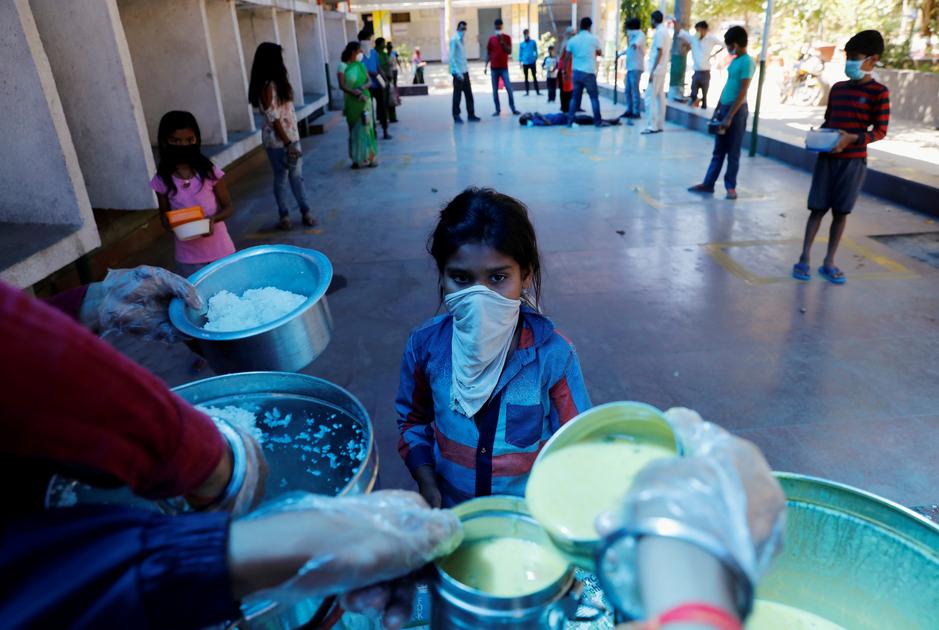71% Indians Cannot Afford Healthy Diet: CSE
Jun 14, 2022 | Pratirodh Bureau
FILE PHOTO: A child waits to receive food in Ghaziabad, on the outskirts of New Delhi
Seventy-one per cent Indians cannot afford a healthy diet and 1.7 million die every year due to diseases attributable to poor diet, according to a report released by the Centre for Science and Environment (CSE) and Down to Earth magazine.
The diseases attributable to dietary risk factors include respiratory ailments, diabetes, cancer, strokes and coronary heart disease, the report ‘State of India’s Environment 2022: In Figures’ said.
The report refers to diets low in fruits, vegetables, whole grains, and diets high in processed meat, red meat, and sugary drinks.
“Seventy-one percent of Indians cannot afford a healthy diet. The global average is 42 percent,” it said citing the Global Nutrition Report, 2021.
The diet of an average Indian lacks in fruits, vegetables, legumes, nuts and whole grains. The consumption of fish, dairy and red meat is within target, it said.
A healthy diet is considered unaffordable when its cost exceeds 63 percent of a person’s income, according to the Food and Agriculture Organisation.
In India, adults aged 20 and above have only 35.8g of fruit per day as against the recommended 200g per day and just 168.7g of vegetables per day as against the minimum 300g per day.
They consume just 24.9g per day (25 percent of target) of legumes and 3.2g (13 percent of target) of nuts per day.
“Despite some progress, diets are not getting healthier. Additionally, they are making increasing demands on the environment, even as unacceptable levels of malnutrition persist in the country,” the report said.
“The high human, environmental and economic costs of continuing our current trajectory are so significant that we will pay a far higher price if we fail to act. The global food system falls far short of achieving global goals for both health and the environment,” it said.
The report also presents an analysis of food prices. It says that the consumer food price index (CFPI) inflation has seen a 327 per cent increase in the past year, while the consumer price index (CPI) which includes CFPI — has seen an 84 per cent jump.
Food seems to be the biggest mover of CPI inflation. The current high levels of food inflation have been driven by the rising cost of production, surging international crop prices and extreme weather-related disruptions.
“In fact, our analysis of CRISIL data shows that food prices have increased at a higher rate in rural areas than in urban areas in March-April 2022,” said Richard Mahapatra, managing editor, Down To Earth.
